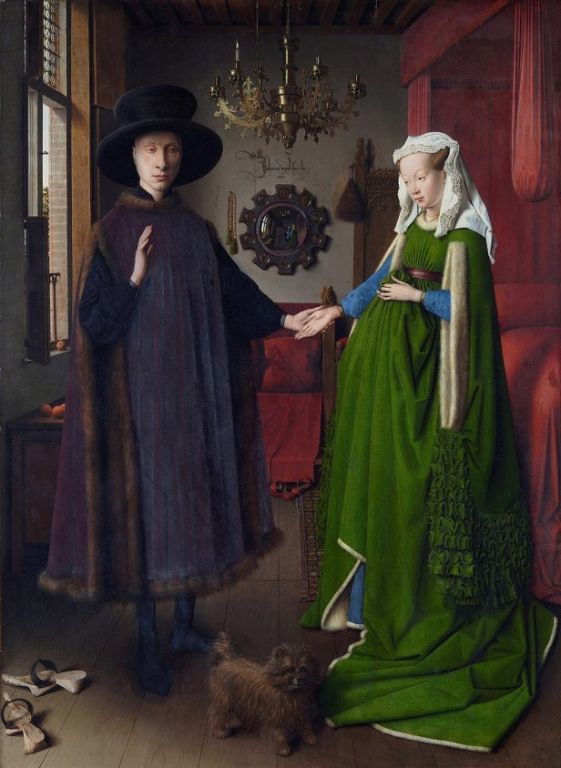Arnolfini Portrait By Jan van Eyck, Oil Painting

"Arnolfini Portrait" by Jan van Eyck is a full length double portrait showing the Italian merchant Giovanni di Nicolao Arnolfini and his wife in their house in the Flemish city of Bruges. Arnolfini was a member of a Bruges-based merchant family from Lucca as a representative of the Medici family. The couple is pictured in his wealthy home. This masterpiece is considered one of the most original and refined paintings in our heritage of early oil paintings.
This painting is famous for its sophisticated symbolism, detailed representation, geometric perspective, use of light and for the various detailed elements in the picture, such as the mirror, to create a realistic space. The bright colors emphasize the material wealth and the opulence of the world of the motif. Van Eyck's search for realism means that he probably used a magnifying glass to paint the tiny details like the highlights in the amber beads next to the mirror and the smaller images around the mirror.
The painting is full of everyday details and symbolism. Van Eyck has provided the whole picture with symbolism, such as the little dog symbolizing fidelity. And the coronation of the bedpost is a small statue of St. Margaret, patron saint of birth.
The ornate Latin signature under the mirror means "Jan van Eyck was here 1434". Jan van Eyck was a Flemish painter working in Bruges. He is one of the most important representatives of the art of the Northern Renaissance. The "Arnolfini Portrait" and his "Gent Altar" are the oldest masterpieces executed in oil and not in tempera. Van Eyck took advantage of the longer drying time of oil paint compared to tempera to mix colors as wet paint and achieve variations in light and shade to create the illusion of three-dimensional representations.





No comments: